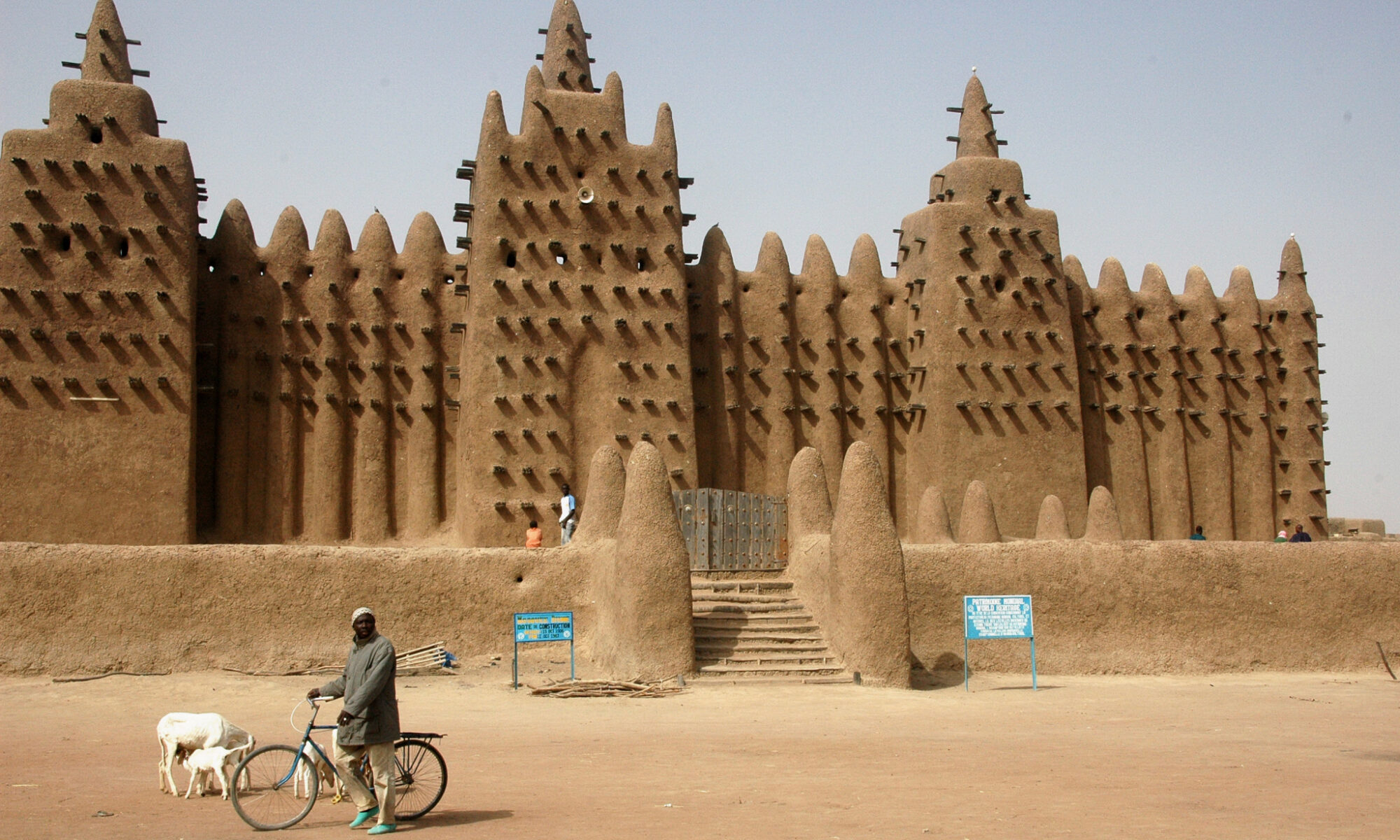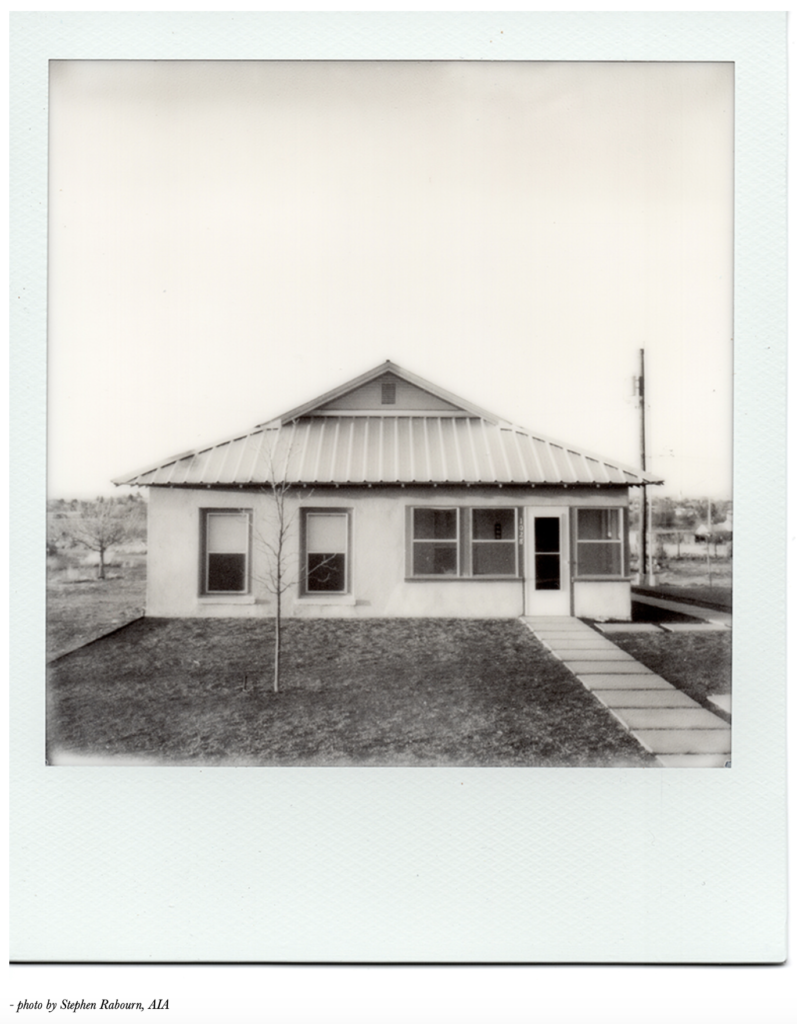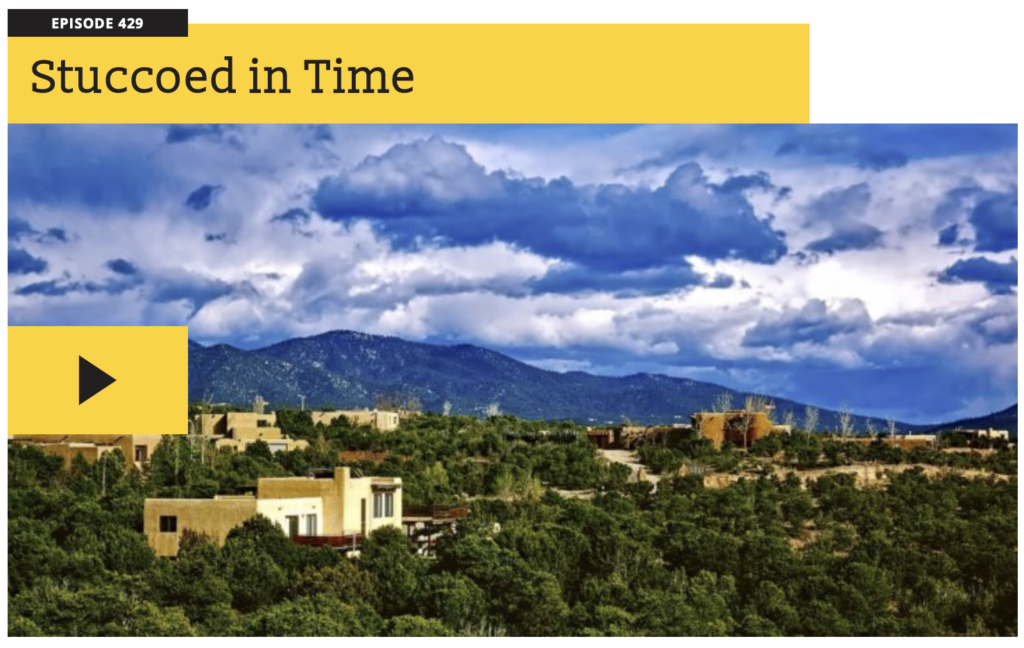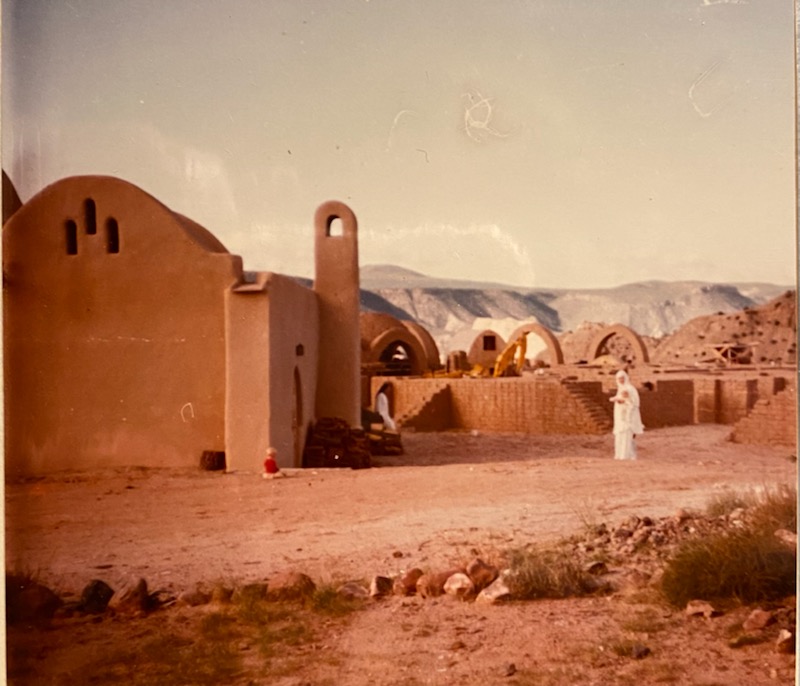The Adobe Factory in Alcalde, New Mexico, is the largest adobe factory in the world, with the capability of producing up to 25,000 adobes each day. Here’s how it is done:
The Adobe Paradox
Once a building material of the humble economy used by autochthonous peoples of the Southwest, adobe has become fashionable among Marfa’s affluent newcomers. Here, in this article in Texas Architect, a student with roots in the town’s Mexican-American community and and architect practicing in the region discuss the building block’s complex cultural content. Because, in a Texas Art Mecca, Humble Adobe Now Carries a High Cost, according to this New York Times article discussing how taxes are higher for adobe homes.
Stuccoed in Time at 99% Invisible
Santa Fe is famous in part for a particular architectural style, an adobe look that’s known as Pueblo Revival. This aesthetic combines elements of indigenous pueblo architecture and New Mexico’s old Spanish missions, resulting in mostly low, brown buildings with smooth edges. Buildings in the city’s historic districts have to follow a number of design guidelines so that they conform with the dominant style. Deviating from those aesthetics can stir up a lot of controversy.
But this adherence to the “Santa Fe Style” hasn’t always been the norm. For a time, there was actually a powerful push to “Americanize” the city’s built environment. Then, over a century ago, a group of preservationists laid out a vision for the look and feel of Santa Fe architecture, and in the process dramatically transformed the town.
The Mud Episode from the Santa Fe Art Institute
Listen to the mud episode of Unsettled podcast from Santa Fe Art Institute created by Dr. Alicia Inez Guzmán & Diego Medina. Listen to artists Joanna Keane Lopez and Christine Howard Sandoval reflect on the the complex history, traditions, politics, and meanings embedded within the act of building with mud in New Mexico and California.
Mud Frontiers
Emerging Objects explores the frontiers of technology and material using traditional materials (clay, water, and wheat straw), to push the boundaries of sustainable and ecological construction in a two phase project that explores traditional clay craft at the scale of architecture and pottery. The end goal of this endeavor is to demonstrate that low-cost and low-labor construction that is accessible, economical and safe is possible. The project began in the contemporary borderlands along the Rio Grande watershed beginning in El Paso and Juarez and ended near the headwaters of the Rio Grande in Colorado’s San Luis Valley, which was the edge of the historic border between the U.S. and Mexico prior to 1848. The entire region has employed traditional pottery and earthen construction traditions for centuries. More at Mud Frontiers
The Farmer, the Architect and the Scientist
The Farmer, the Architect and the Scientist from The Gaia Foundation & ABN on Vimeo.
A new film, ‘The Farmer, the Architect and the Scientist’ tells the story of a seed hero. Dr Debal Deb is a pioneering ecologist committed to working with traditional farmers in eastern India to conserve indigenous seed diversity. Over almost two decades, Debal has managed to save 920 varieties of rice, all of which he stores in community based seed banks in West Bengal and Odisha for farmers. This film follows the construction of a new seed bank premises in Odisha, a venture that provides a potent symbol of Debal’s values.
Shibam, Yemen
Experiencia MUVA
Using concrete and mud bricks, architects Solanito Benítez, Gloria Cabral, María Rovea y Ricardo Sargiotti have constructed a unique wall by hastening the erosion of the mud by washing it away once the concrete mortar had cured, leaving voids in the places where mud bricks were set.
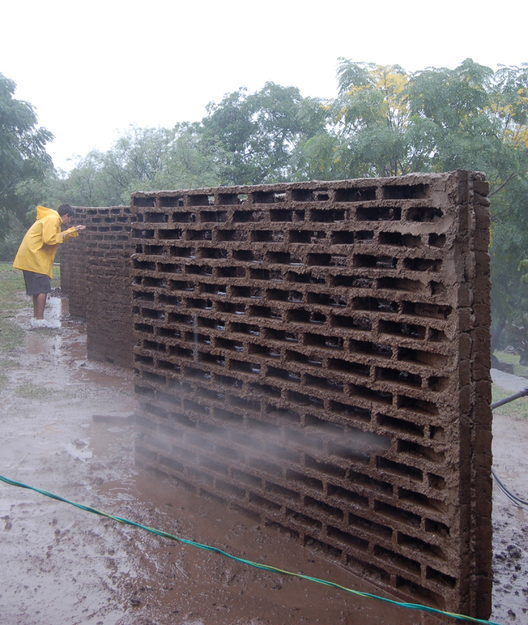
Iggy Azalea

Australian rap star Iggy Azalea grew up in a house that her father built by hand from mud bricks, surrounded by 5 hectares of land. She reminisces about it in her song Work:
You can hate it or love it
Hustle and the struggle is the only thing I’m trusting
Thorough bread in a mud brick before the budget
White chick on that Pac shit
My passion was ironic
And my dreams were uncommon
